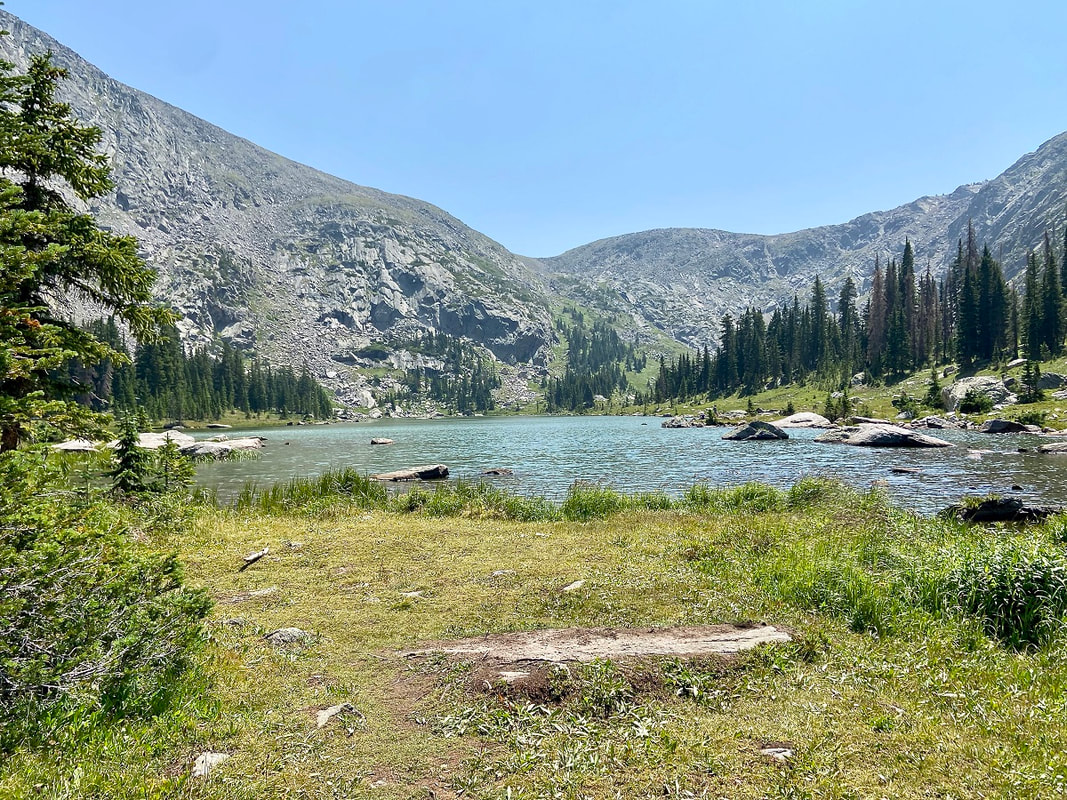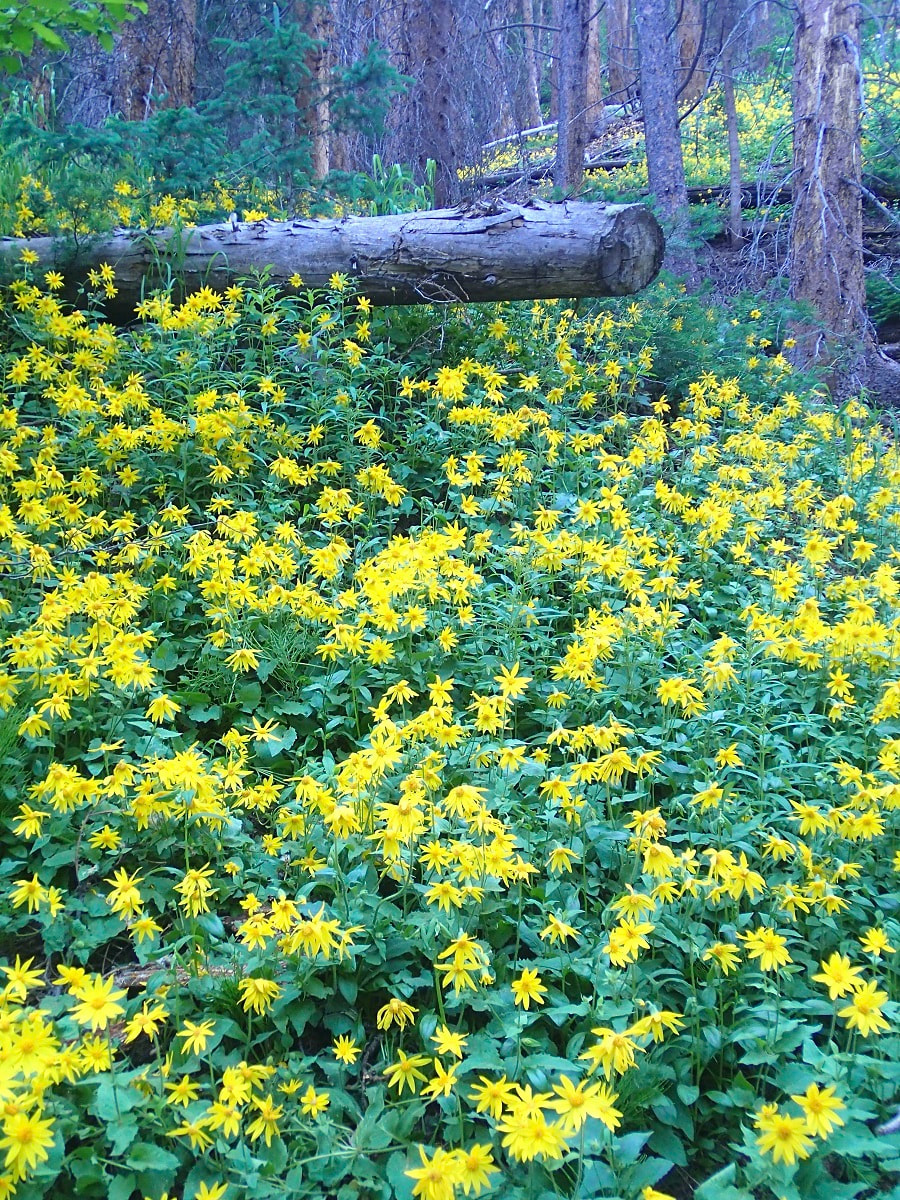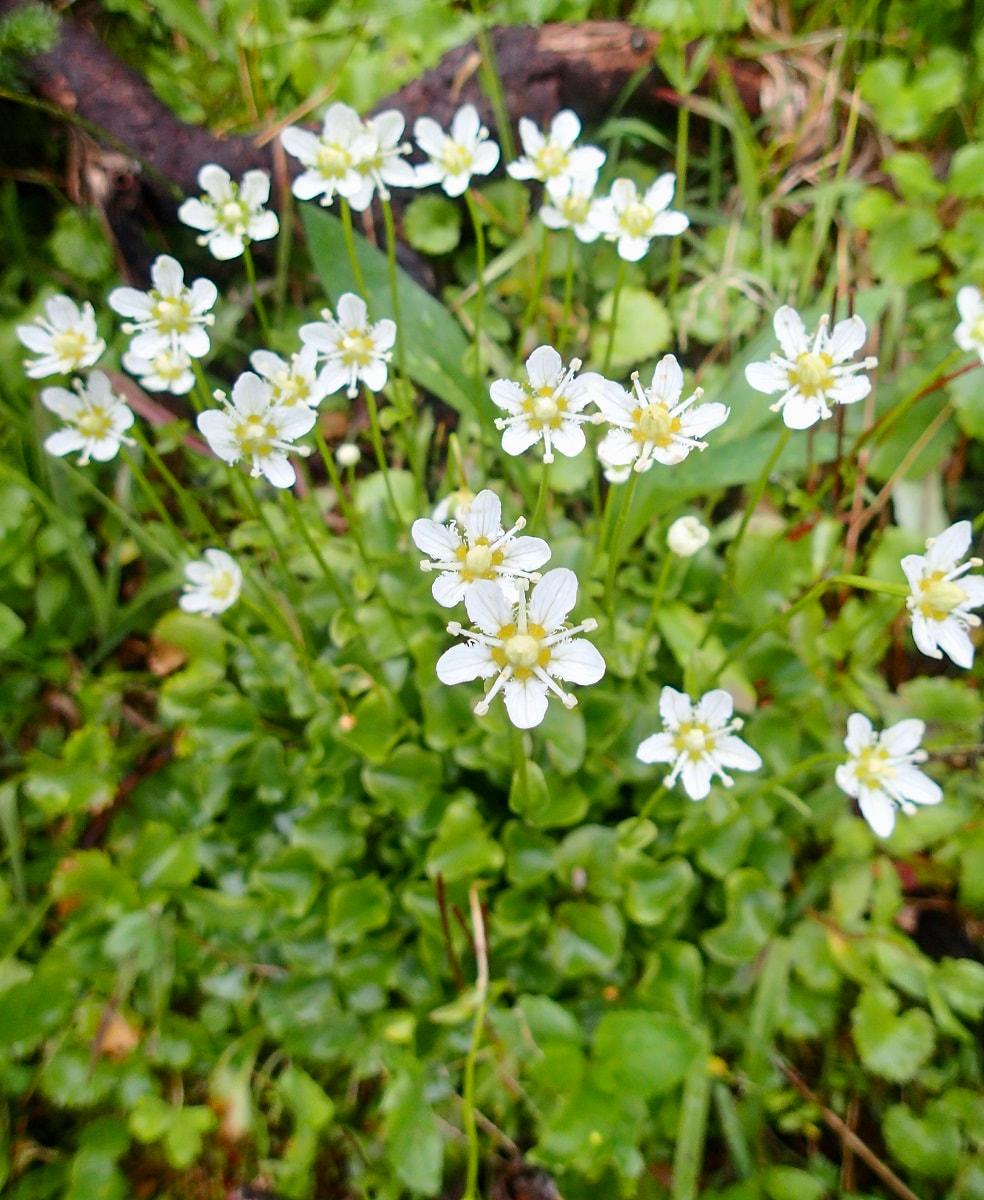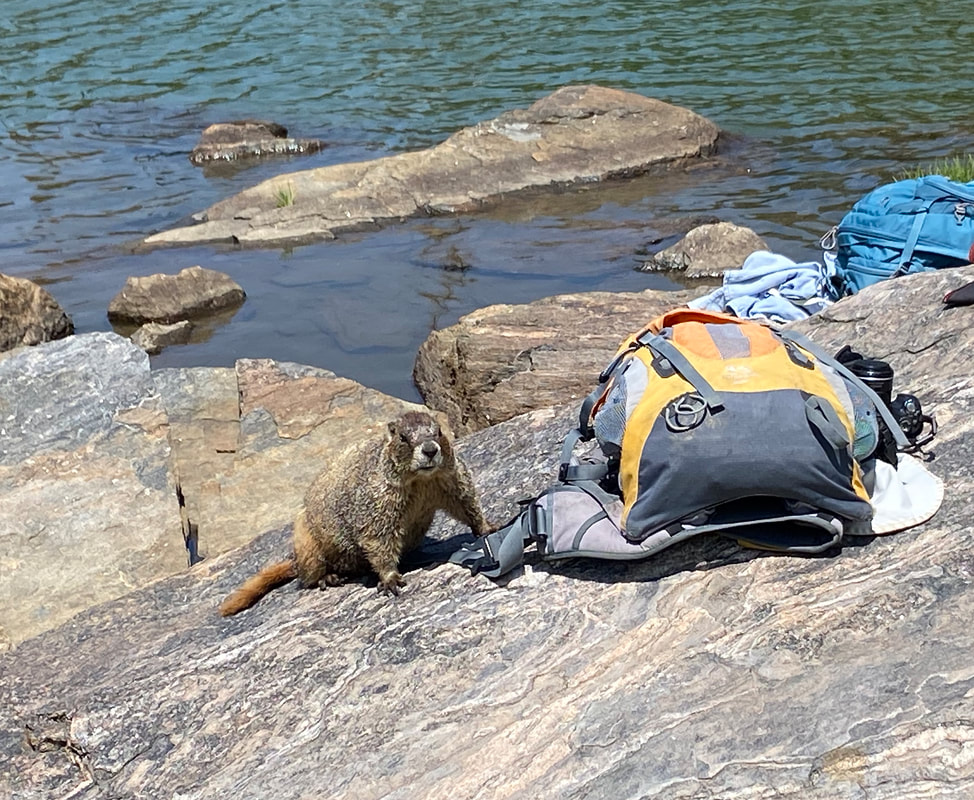|
Story and photos by Marlene Borneman Editor's note: the hike to Timber Lake is just one of three of the best wildflower hikes in Rocky Mountain National Park included in the June/July issue of HIKE ROCKY magazine. Become a member today to read about the other two! TIMBER LAKE Mileage: 10.9 miles Round Trip Elevation gain: 2,000 feet Rating: Moderate - Strenuous Life Zones: Montane, subalpine Peak Bloom: July – mid- August COMPLETE TRAIL PROFILE This is terrific wildflower hike on the west side of the park through a broad range of habitats. The East Troublesome fire forever changed the landscape in some areas of the park's west side, however this trail was spared. Be aware, moose, elk and deer frequent this trail. The hike begins at the Timber Lake Trailhead approximately 32 miles from the Beaver Meadows entrance and 10 miles from the Grand Lake entrance. There are restrooms at the trailhead. A well-defined trail leads through a small meadow for a short distance. The trail then heads southeast through both dry and moist lodgepole pine and aspen forest where small-leaf pussy toes, Parry's milkvetch, showy locoweed, Richardson's and wild geranium, cinquefoil, and kinnikinnick are scattered. The tiny one-sided wintergreen, green-flowered wintergreen and pink pyrola are found here too under the shady canopies. 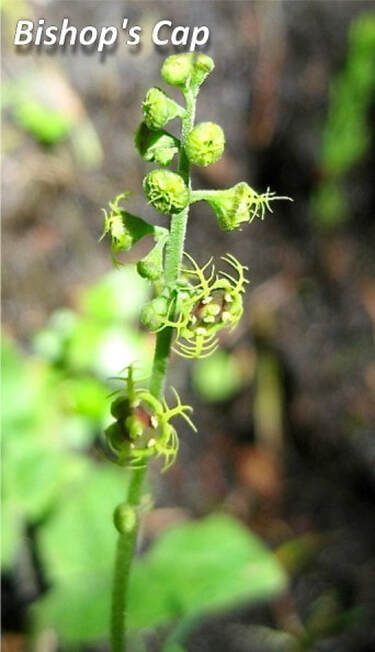 Heartleaf arnicas thickly fill in the hillsides with their bright yellow faces. In the moist forest you may see a flower that has a rather peculiar appearance. That is the bishops cap, also known as five-star miterwort. This flower often goes unnoticed even though it grows in clusters of a dozen plants or more. This is likely because it is very tiny and green in color. I take a hand lens just to gaze upon its amazing art work. Soon a bridge crosses Beaver Creek where the trail becomes steeper and switchbacks up southeast through a conifer forest. Plants that prefer a drier habitat can be found here such as pinedrops, white hawkweed, and Fendler's ragwort. 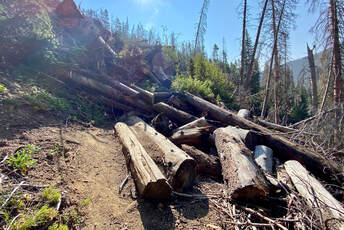 Landslide on the Timber Lake Trail. Landslide on the Timber Lake Trail. Within two miles there is a large landslide area that can be difficult to cross. There are large boulders and large downed trees to climb over and around. The stretch is about 70 feet wide before connecting back to the established trail. 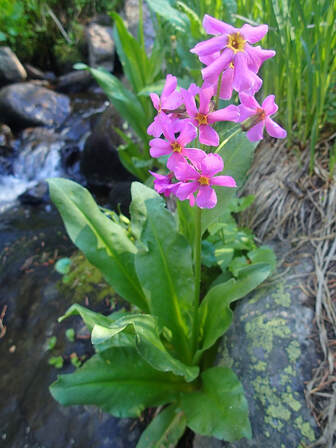 Parry's Primrose Parry's Primrose There are several small tributary streams and many seeps along this trail which provide the perfect spot for Hornemann's willowherb, twinflower, Parry's primrose and American alpine speedwell. Fringed grass of Parnassuss is the big prize to see in these wet shady areas. The hike continues along the lower slopes of Jackstraw mountain where mountain death camas, sickletop lousewort, fern leaf lousewort, red paintbrush, and fireweed prosper. Heading southeast the view soon opens out along a boggy area where white and green bog orchids maybe found along with star gentian, fringed gentian and elephanthead. After a short steep climb the trail comes to a beautiful meadow where subalpine daisies and saffron ragwort gather in masses. Heading southeast the trail steepens following the outlet stream to the lake. Tall chiming bells and heart-leaf bittercress fill in around the flowing waters. The meadows surrounding Timber Lake lakes outlet stream are very marshy. The soggy ground is loaded with marsh marigolds, globeflowers, and alpine laurel, also called mountain bog laurel. Timber Lake makes an idyllic setting for lunch taking in the view of the west side of Mount Ida. Marmots are part of the scenery at the lake so take care not to leave your pack unattended. 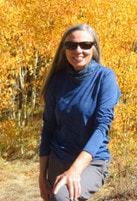 Marlene has been photographing Colorado's wildflowers while on her hiking and climbing adventures since 1979. Marlene has climbed Colorado's 54 14ers and the 126 USGS named peaks in Rocky. She is the author of Rocky Mountain Wildflowers 2nd Ed, The Best Front Range Wildflower Hikes, and Rocky Mountain Alpine Flowers. Click here to purchase Marlene's books
0 Comments
Leave a Reply. |
Categories
All
|
© Copyright 2025 Barefoot Publications, All Rights Reserved

